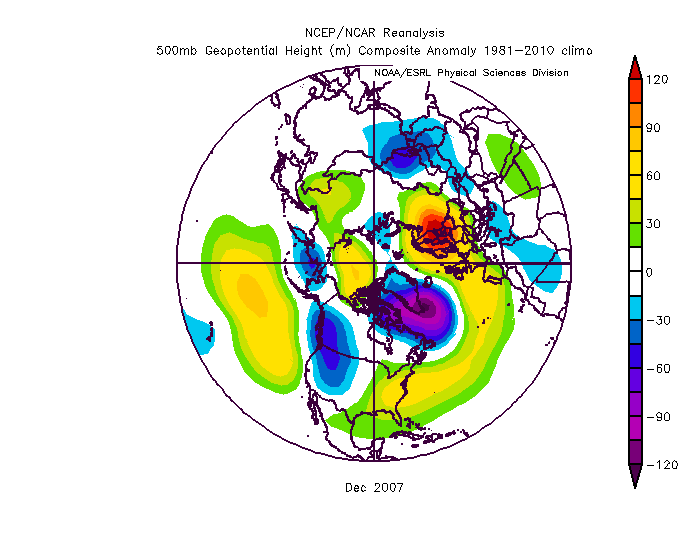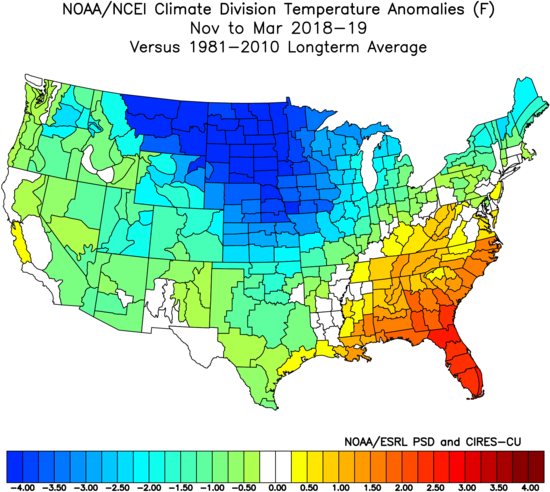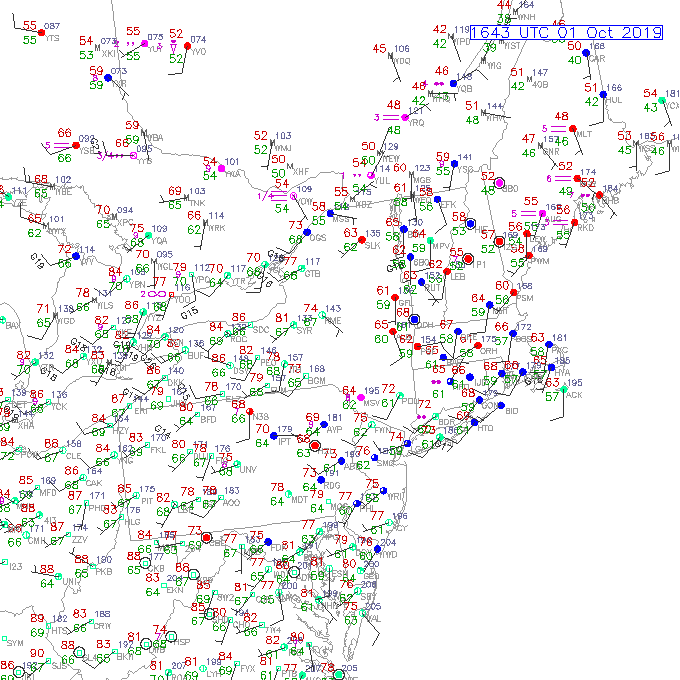-
Posts
90,904 -
Joined
-
Last visited
Content Type
Profiles
Blogs
Forums
American Weather
Media Demo
Store
Gallery
Everything posted by ORH_wxman
-
Yeah that's not a warm look here at all. Def not as cold on the anomalies as the N plains would be but we'd be under some confluence there most likely. Either way, who knows if that actually verifies. Fodder for the anxious souls though.
-
Yep, that's really a similar look to Dec 2007....the +NAO vortex was so big it encroached into New Foundland and Quebec so we got these stout highs there that caused all the would-be lakes cutters to run into a brick wall.
-
Def a bit of a Nina look....Tip is going to be singing the geopotential gradient blues if that verifies. Look at that meat grinder east of Maine.
-
I think you mean March 2018....but yeah....it's been pretty rare recently. These things tend to swing back though....we couldn't buy a -NAO for a few years in the late 1990s as well. We don't really need it super negative...even neutral is pretty decent.
-
We did well in 2010-2011 because had an obscene -NAO....and a -PNA is not some sort of death knell for New England. So many people get wrapped up in that. I feel like I say until I'm blue in the face, but a -PNA/-NAO combo is probably our best snow pattern. We literally went almost the entire 1960s with that setup. 2010-2011 was also that setup with the NAO on 'roids a bit more than normal.
-
Whether it registers as an official Niño or not, I made the comment a while back that i really like the western regions being a lot warmer than the east right now. The physics of that doesn't change whether it officially registers...it should still make convection more likely near the dateline versus further east and that is a good thing for winter enthusiasts. The tepid nature of the anomalies though understandably diminishes the overall impact. I know Tip hit on this point. But still, all else equal, we'd rather have the warmer anomalies west and not east.
-
2012 is a good match too...cold waters in the east can get drawn west pretty quickly if we have an easterly wind burst. So that's why I want to see some good WWBs. I'm not trying to totally discount a Nino, I just think it's still not a foregone conclusion. A lot of us we're getting convinced of a weak Nino in autumn of 2012 too before it crapped out pretty fast in November.
-
I'd bet dollars to donuts that none of them had Nino 3 as cold as it is this year.
-
Maybe...There's a lot of cold water in the east that could keep this neutral though. The subsurface has some good warmth out in the west parts so maybe that surfaces even more, but there's no way to know which will win out....or at least that is beyond my pay grade. Lets see some WWBs though if it's gonna happen....it's getting late. We're already in October. Something developing by December may not matter that much for winter.
-
I don't think that was the big issue in the way I'm talking about it. We weren't lacking in events or overall QPF. Now maybe it played a role in not having a coastal bomb? Sure I buy that. We didn't have a coastal bomb in '07-'08 either likely due to the fast gradient flow. But we still had plenty of snow events.
-
There was a lot of really cold air masses oozing over the top last winter. You can tell from the map where the upper plains were frigid. ORH actually had their coldest max temp since 1994 (1F for a high tying 1994) last winter. There were some impressive airmasses. We just couldn't quite get those good highs that give interior SNE big snows on the front end of a lot of those systems. Obviously the deeper cold in NNE was able to which is why there was a big snowfall gradient.
-
It's part of the reason I think I would definitely roll the dice again on last year's pattern in the pike region. I know others had disagreed, but I think we caught a lot of "unlucky" breaks (or rather, some undesirable small scale perturbations within the large scale pattern for those who are triggered by the work "luck")...it wasn't a great pattern, but we typically snow more in that type of setup than last year. We had an unusual lack of good front enders/triple pointers here considering the source region of the storms along with the mean temps.
-
MVL is prob a bit colder than others, but overall it was colder than average up north....even down into SNE too. November being included flips SNE negative. ORH was about dead nuts normal without November included (-0.3F without November vs -1.2F with):
-
PAC is starting to look a little more Nina-esque.....not just ENSO region either, but the waters in the eastern GOA have been cooling recently with the warmest anomalies south of the Aleutians...that's trending toward -PDO. It isn't actually there yet, but if that trend continued, that's what it would end up as. That, along with the cool-neutral look in the tropics gives it a hint of Nina. That might increase the odds of a more wintry December....but these things can still change of course. The waters in the N PAC can shuffle with a few big cyclones. The tropics are still the most influential...but this is something to watch.
-
Yeah I hate using percent of normal for snowfall...it's not apples to apples between sites. Need to use sigma (standard dev) instead to standardize it. But I think too many people's eyes gloss over when we start talking about a 1 sigma or a half sigma snowfall season.
-
I agree the hype surrounding it is obscene compared to the risk...and I haven't been immune. We've been putting bug spray on my son every time he goes outside. But this past weekend when I did it, the thought came to me how paranoid I must look if the pre-parent version of myself looked at this....or simply the analytical half of my mind rather than the parental/instinctive side. It is almost certainly more dangerous for me to take my son with me to the grocery store in my car, and yet I do it without hesitation.
-
Interesting discussion there....and a good one. Tom was the same class as Chris (OceanStateWx) at Cornell.
-
Well like i said, since EEE is a little more complicated than malaria and Zika, I'm pointing out why EEE might not be as simple as more mosquitoes = more EEE cases...not that it's a huge distinction when there's the aforementioned Zika/Malaria to worry about too. I think most see more mosquitoes as a bad thing anyway. Nobody likes them.
-
No it doesn;t...the tropical PAC looks decent too. Cooler anomalies in the eastern ENSO region than the west.
-
EEE is a little more complicated than something like malaria because a mosquito has to bite an infected bird first and the disease is not transmitted from person to person after infection like Zika or malaria is. So the sole method of the virus spreading is dependent on an additional non-human carrier which is more likely to be affected by CC than humans themselves are.
-
-
Well lets start with this......CC is real and we are warming from it. But the scientific literature on attribution studies is not often portrayed in the media accurately. I'm not going to dive into the depths of policy discussion and what not in this thread...it's not the place for it. But inaccurate portrayal of the literature in the media will only cause damage to the credibility of the movement to do something about CC. People should also keep in mind when some of these studies come out, there are several scenarios presented....usually the one that gets presented in the media is the "worst case scenario", which I typically find not credible because they are based on unrealistic RCP scenarios from the IPCC climate models....as an example, the worst case scenario from the last report is called "RCP 8.5"....now you might think that the worst case scenario is just the continuation of the status quo, but it actually isn't when you dive into it. One of the assumptions it makes is we will rebuild our coal energy usage to 7x it's current size despite the fact that coal usage peaked in 2014 and the decline has only accelerated since then. So...yeah, is it theoretically plausible to build global coal infrastructure to 7x the current size? Yes, but in what realistic world does that happen? There are some other similar assumptions in that any progress made in green energy reverses and nearly disappears....again, something that doesn't really pass the smell test in terms of reality. This doesn't mean we shouldn't be concerned...there's plenty of reason to be.... but it is just simply an informative caution about taking these worst case scenarios at face value.
-
It's a good lesson in being a skeptic at lead times longer than a few days for big warmth this late in the season. There's a lot of things that can "go wrong" to negate it. With the PJ much further south than we had in August, we get more sneaky highs from confluence and more little waves forming closer along the front. The longer night can reinforce the CAD from those highs too...make it take longer to mix out during the day which can slow the progression of surface warm fronts. So we get a lot of pretty colors at 500mb, but pretty meh at the surface. Should be pretty mild overnight though tonight.
-
Nice Fozz. You did March skiing last year. Best open secret in New England is March skiing. You'll see crowds in mid December with people skiing down man made icy death ribbons...but then find no lines with 8-10 feet of base and all glades open in March. Sometimes people are funny like that. But taking advantage is great. It's prob why ginxy usually does his Sunday River trip 3rd week of March. Most years I try to get out in March too...though last year I was shut out. Wife was pregnant and with another 3 year old just didn't make it out. But he's gonna be 4 this March and he's going on skis this winter.
-
Are you a really good skier? MRG is pretty gnarly so if you like that stuff, prob worth the pass at the sub-30 price. It's a hike and a half from RI though. Prob 4 hours. Youll prob be going to Mt Snow a lot on the drifter pass. Not nearly as far.







